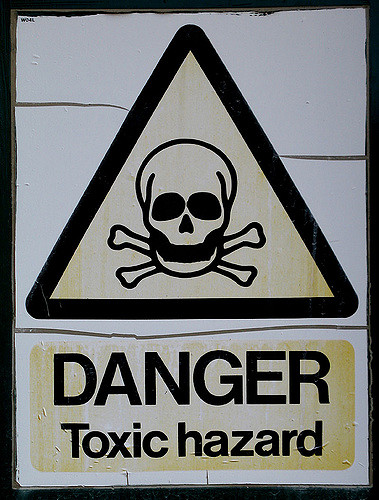
Image Credit: eek the cat
So what kind of workplace do you work in? No, I’m not asking about the kind of furniture you have, what the view out the window looks like, or how comfortable the chairs are. Instead, what I’d like to know is just exactly how toxic is it? Surveys have been taken that reveal that 64% of people reported that they were currently working with someone that they considered to be toxic. A whopping 94% said that they had worked with someone who was toxic at some point in their career. It looks like we may have a problem that has to be solved by a manager here using your manager skills.
What Makes A Workplace Toxic?
Ok, so a toxic workplace is probably not a good thing, but is really all that bad of a thing? I mean managers have a lot of different things on their hands and is dealing with a toxic workplace really something that ranks? Interestingly enough, the answer turns out to be yes. It turns out that the answer is yes for a couple of reasons. The first is simple. Toxic workplaces end up costing U.S. employers US$23.8 billion annually in the form of things such as health care, absenteeism, lost productivity, and more. Secondly, it turns out that toxicity in the workplace spreads like a virus – something that may not have been covered in your manager training. What this means for you is that you can catch the “infection” and then you will find yourself acting in ways that complement or replicate the very behaviors that are making you angry, frustrated, and/or depressed. Just image how that will impact others…
So what are the things that can cause a work place to become toxic? The first thing that can cause this is gossip. I think that we all know that gossip in the workplace is fairly common, and there is a good chance that you’ve engaged in it at one time or another. However, relentless workplace gossip has the ability to cause damaging effects for both the individuals involved and the organization as a whole. Another problem that can cause problems in the workplace is something that may have followed us there from high school: bullying. The effects of bullying in the workplace can be both huge and costly for businesses. Aggressiveness (both the verbal and physical types) can undermine safety and requires team members to divert resources from productive work into personal defensive operations such as fight and flight.
One thing that can cause a workplace to become toxic has everything to do with managers. We are specifically talking about micromanagement. Micromanagement situations can occur when a manager focuses solely on what employees are doing wrong or on correcting problems, and rarely gives positive feedback for what is going right. Additionally, a micromanagement environment can occur when there are too many levels of approval and management to get things done efficiently. Finally, a workplace that has narcissistic team members can quickly turn toxic. Narcissistic personality disorder is defined as being “a mental disorder in which people have an inflated sense of their own importance and a deep need for admiration”. Team members with narcissistic personality disorder believe that they’re superior to others and have little regard for other people’s feelings.
How Can A Manager Deal With A Toxic Workplace?
Great. So you’ve taken a look around and you’ve decided that you are working in a toxic work environment. Now what’s a manager to do? You need to be able to deal with each of the various causes of a toxic workplace separately. Specifically, managers need to understand that when left unchecked, gossip can quickly get out of hand if it’s not extinguished immediately. This means that when you detect too much gossip going on within your team, you need to take strong and immediate steps to stamp it out. Additionally, your workplace is not like high school was. You are the principal and so it is your responsibility to ensure that every member of your team feels that they are both emotionally (and physically) safe while they are at work.
When you discover that you have a narcissist on your team, you will have to be the one who deals with them. The one thing that you are not going to want to do is to challenge them. The reason that this is not a good idea is because any sort of escalation will work to their advantage and may only damage your reputation. You are going to have to make a decision as to if you can bear the treatments of their attacks in silence. If not, then it may be time for you to get them transferred to a different department. Managers have to step up and find ways to deal with brutes and bullies in the workplace. You have a number of different options here – you can have them moved to a different part of the organization, or you can distancing yourself and other about 100 feet away from the toxic person.
Ultimately it is your responsibility as a manager to deal with a toxic workplace. It is important that you document everything. You need to preserve all toxic emails and other communications and get witness statements from your co-workers whenever possible. At some point in time in the future if things come to a head, all of this information may turn out to be important. You need to understand the people who are creating the toxic workplace. If you understand the winner-loser dynamic that drives them, you can find ways to protect yourself and avoid exciting their most toxic behaviors.
What All Of This Means For You
Not all workplaces are created equally. There are some workplaces that contain toxic people who can transform an enjoyable workplace into a toxic workplace no matter how much team building you are doing. As a manager, it is your responsibility to detect when you have a toxic person on your team and then you need to take action to eliminate their toxic behavior.
There are four different types of behaviors that can turn a workplace toxic. The first is the existence of too much gossip. When this happens, a manager needs to step in and shut it down. The next is when you discover that you have a bully on your team. If this happens, you need to either transfer them out of the team or isolate them so there is no one for them to bully. Micromanagement by a manager is something else that can frustrate team members and make them start to resent their jobs. Fixing this is easy for a manager – just stop doing it. Finally, if you discover that you have a narcissistic member of your team, don’t challenge them. Learn to deal with them or have them transferred elsewhere in the company.
Managers depend on their team to perform at a high level in order to be able to accomplish good things for the company. If a toxic workplace has developed where you work, then you have a problem on your hands that needs to be solved. Detecting the toxic workplace is the first step, dealing with it is the second step. Take the time to ensure that the workplace that your team is operating in will allow them to operate at their peak.
– Dr. Jim Anderson
Blue Elephant Consulting –
Your Source For Real World IT Management Skills™
Question For You: What should you do if your discover that you have multiple toxic people on your team?
![]() Click here to get automatic updates when The Accidental IT Leader Blog is updated.
Click here to get automatic updates when The Accidental IT Leader Blog is updated.
P.S.: Free subscriptions to The Accidental IT Leader Newsletter are now available. Learn what you need to know to do the job. Subscribe now: Click Here!
What We’ll Be Talking About Next Time
As a manager, you are responsible for using your manager skills to manage a team of professionals. This means that you have to spend time with each member of your team in order to make sure that they have a good understanding of where they want their career to go and how they are going to achieve it. At the the same time, you need to have a good understanding of where you want your career to go. Likewise, once you know what you want, you’re going to have to know how you can go about making it happen.

